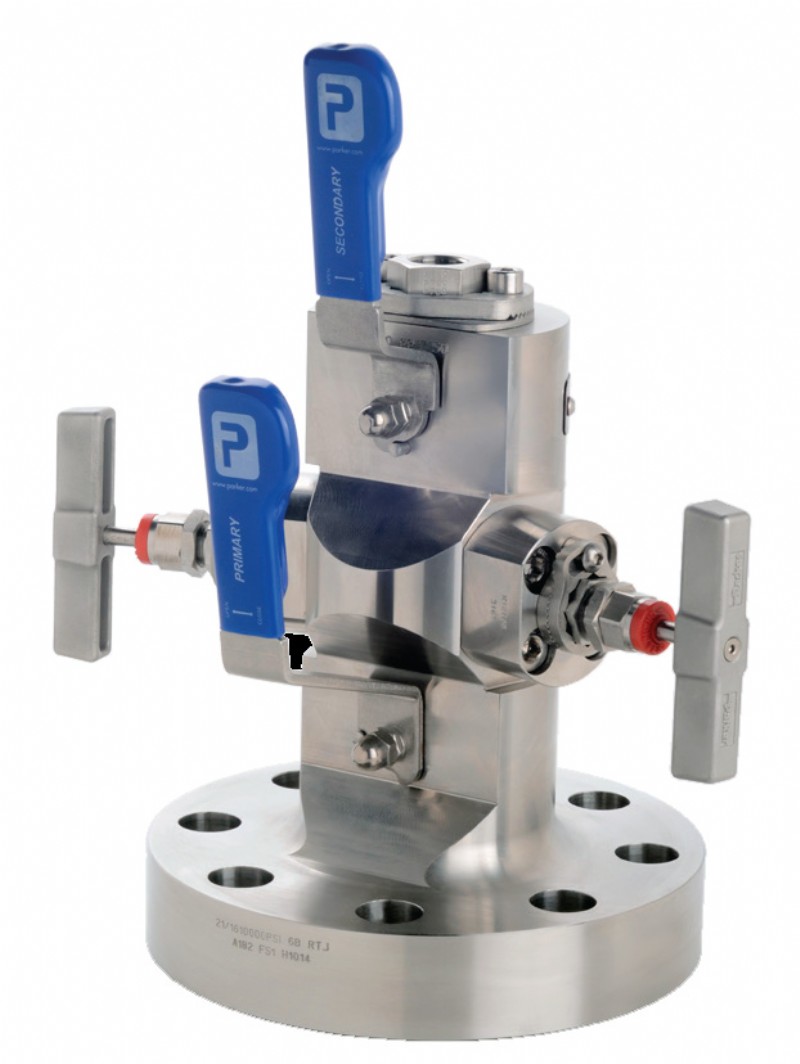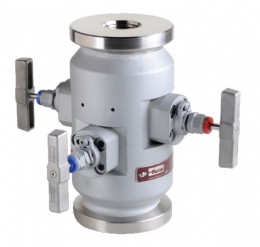Enhancing Offshore Safety Through Valve Technology

Double block and bleed valve

Double block and bleed valve utilizing heavy-duty needle valves
“In recent years, high profile accidents involving explosions and gas leaks are forcing the oil and gas industry to review its approach to pressure monitoring during drilling and production. The focus is very firmly on enhancing operational safety and one aspect that is receiving particular attention is the pressure in the voids between the annular casing strings of a well. Sudden changes in pressure could indicate leaks in the casing strings, cement bonding or production tubing.
The oil and gas industry is having to move its platforms into ever deeper waters and energy companies are being forced to drill to greater depths at many onshore exploration sites now that the shallow layers of oil and gas reservoirs have been largely exploited. Both these situations run the risk of encountering higher reservoir pressures and temperatures increases, which is why the Health and Safety Executive is urging operators to adopt its guidelines for well integrity.
One aspect that is receiving particular attention is the pressure in the voids between the annular casing strings of a well – any sudden increase or change could indicate leaks in the casing strings, cement bonding or production tubing. There is consequently now a growing trend to monitor the pressure in each void, so that operators can gain early warning of impending problems and implement emergency shutdown procedures to avoid disaster.
The oil and gas industry is required to increase pressure monitoring within the casings to the wellhead annulus.
As part of meeting this requirement, Parker has supplied two wellhead platforms in the North Sea with instrumentation valves and fittings to enable surface pressure monitoring. To monitor the casing pressure, the associated valves and fittings needed to be fully compliant with the API 6A specification for wellhead and Christmas tree equipment.
The two North Sea projects involved high temperature, high pressure gas condensate field, with our valves used across a number of platforms, in drilling depths of 6,000 meters.
Both customers required API 6A-compliant valves for direct flange mounting on wellhead assemblies. The flange class depends on the pressure rating of the annuli that are being monitored.
Pro-Bloc Valves
For one of these customers, Parker supplied bespoke versions of its Pro-Bloc valves, with 5k and 10k flanges. These are double block (ball) valves that incorporate two needle valves and two vent outlets. These valve assemblies feature a straightthrough bore to facilitate accurate pressure measurement, with one vent outlet used for the pressure gauge, the other equipped with a special coupling to allow quick connect and release of measuring equipment while monitoring the well.
Double Block and Bleed Needle Valves
The other customer required doubleblock- and-bleed needle valves with 5k, 10k and 15k flanges, for installation between two large annulus valves on each of the three annulus outlets. Parker also supplied similar valves for the high integrity pressure protective systems (HIPPS) that the company uses for wellhead flowline pressure protection. The valves feature Parker Autoclave female outlets machined within their hubs, to provide the customer with the option of using direct or remote mounting pressure transmitters.
As oil and gas operators seek to remain compliant, we are seeing an increase in enquiries for our API 6A compliant valves that enable them to safely increase their pressure monitoring. The industry is clearly moving towards greater focus on pressure monitoring in a bid to enhance the overall safety of their sites”.
Tel: +44(0)1271 313 131
Email: ipd@parker.com
Web: www.parker.com

| Telephone: | 01271 313131 |
| Email: | ipd@parker.com |
| Website: | www.ipde-innovations.com |
| More information on the Parker Hannifin Manufacturing Ltd BVAA Member Directory Page |
Search related valve / actuator articles: Parker Hannifin Manufacturing LtdIssue 38ValvesSafety ValvesControl ValvesCryogenic ValvesSolenoid ValvesSafety Relief ValvesBursting DisksPilot ValvesEmergency Shut Down (ESD)Emergency Vent Valves (ESV)Butterfly ValvesPneumatic ValvesBall ValvesGate ValvesNon-Return ValvesDischarge ValvesProcess ValvesDiaphragm Valves / Pinch ValvesChoke ValvesDouble Block and Bleed ValvesCheck ValvesProtectionNeedle ValvesValve InterlocksRotary ValvesControl PanelsHydrantsGlobe ValvesCartridge ValvesComposite ValvesValve IslandsBreather ValvesPulse ValvesPress Fit ValvesIsolating ValvesBypass ValvesRadiator ValvesCapping ValvesPlug ValvesHydraulic ValvesAir Valves







-web.jpg)





